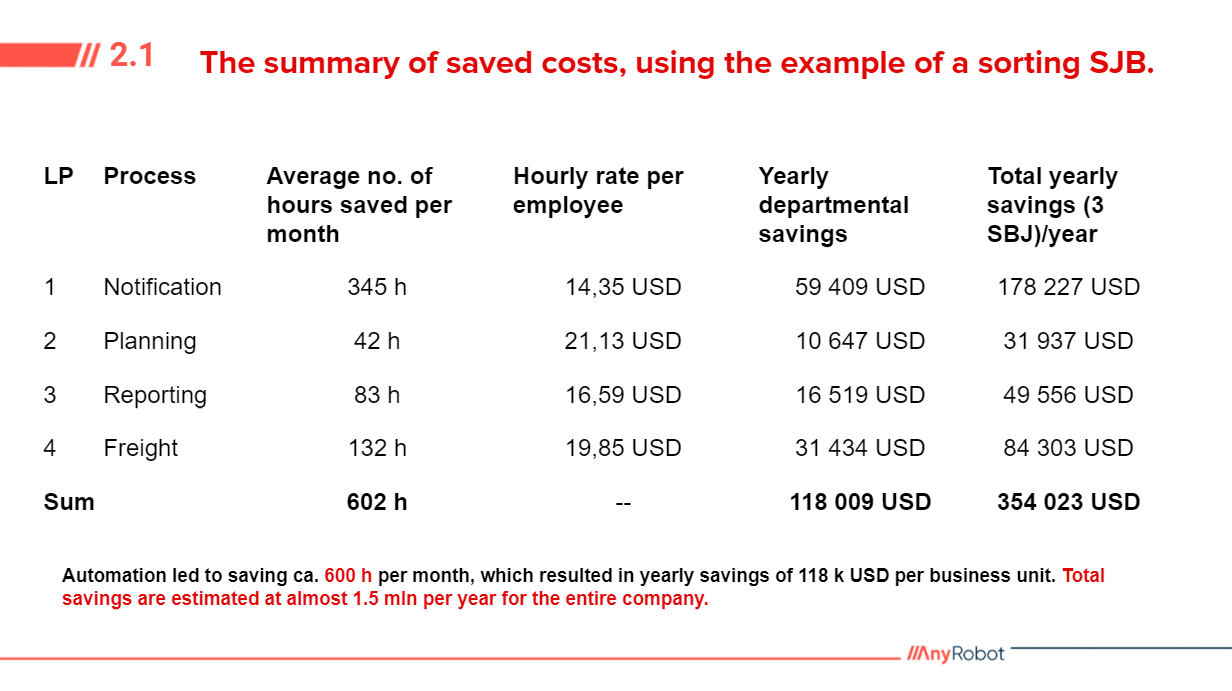
How to scale an organization in 2021 and beyond - trends and solutions
Growing a company after the COVID-19 pandemic comes with unique challenges. Organizations are now competing with each other on numerous levels. Aside from the quality of their products or services, pricing, and effective marketing, the ability to hire the right talent is becoming more and more important. So, how to scale on these competitive markets? Through automation.
What COVID-19 taught us about business
The restrictions that were meant to help us battle the pandemic had the expected side effect: they turned the world of business upside down. For starters, selling products and services in brick and mortar stores became impossible, and was replaced by remote solutions. This often means apps available on smartphones or within the browser. This push for fast digitization was impossible to avoid. For many organizations, it was a matter of survival. It’s also a change that cannot be undone, at least not fully. On the bright side, it brought with it new business models and opportunities, such as options for better data analytics on internal processes.
Digital transformation also means increased resilience in the face of a sudden crisis. It allows companies to reach a wider audience with their products and services. Digital transactions are also becoming more popular, powering a major boost in the fintech sector. Experts predict that online banking and mobile transactions will see major growth, while solutions that improve data security will become more important. The popularity of digital solutions may also have a positive impact on healthcare. It’s possible that, in the near future, 30% of all doctor’s appointments will take place online.
For many industries, remote work is a very impactful trend, as well. Employers who do not decide to give their teams the option to work from home may soon face a difficult challenge. According to experts, it’s going to be more and more difficult to find the right talent for your team, especially if flexible work won’t be an option. The rising value of qualified employees goes hand in hand with their rising expectations. It also introduces new opportunities for companies.
- 61% of respondents in Devire’s study expressed their preference for hybrid work (a few days a week from home, the rest in the office).
- Remote work gives employers access to talent from around the world - but candidates can pick between a larger number of job opportunities.
- It’s estimated that preparing current staff members to work remotely and with more automation solutions is less costly than building a new team.
- In May 2019, 90% of executives surveyed by McKinsey said that there are skill gaps in their organizations, or that they expect these skill gaps to appear within 5 years.
It turns out, however, that the post-COVID world creates very favourable conditions for certain businesses. According to McKinsey, 1,5 million new companies were registered in the US in the third quarter of 202. This is twice the number of new companies from the third quarter of 2019. A record number of companies were also founded in France in October of 2020. The general productivity of organizations is growing, too, mainly due to the adoption of new technologies.

Tech trends for business in 2021 and beyond
Technological innovation and the adoption of new solutions is a crucial element of most companies strategies’ today. Market leaders have to be the best also in this field. It’s a serious challenge, and, at the same time, and incredible opportunity for those who find their bearings in the post-covid reality.
Deloitte lists the following insights that’ll be crucial for the world of business in 2021 and beyond:
- Technological strategy is as important as business strategy for an organization. Companies that don’t adapt to the changes caused by technology not only won’t have access to valuable opportunities, but may have to deal with new limitations.
- Market leaders are looking for ways to revitalise their existing resources through the use of new technologies.
- Automation and digital transformation are helping to change the way the supply chain operates, to help it address consumers’ needs.
- The standardization of solutions based on machine learning (ML) will allow for faster creation of dedicated applications and a broader range of uses for artificial intelligence.
- New ways of finding and storing information, suited for machine processing, will be a must.
- A digital work environment has the potential to improve the productivity of teams and individual workers. It also creates an opportunity for building better relationships between employers and employees.
All of these trends involve investments in technological solutions, the digital transformation of organizations, and the automation of everyday operations.
How to save $350k a year thanks to digital transformation
The changes listed above can be summed up as the growing importance of technology for business. After all, technology is what allows us to effectively work from home and handle everyday tasks from our smartphones. It also opens the way for new business models and revenue sources. In many cases, it also helps companies reduce costs.
Robotic Process Automation (RPA) is a highly effective solution that helps businesses limit operating costs and frees employees from completing boring, repetitive tasks. Team members can dedicate their time to more valuable work, improving the quality of service of their organization and increasing customer satisfaction. Employee engagement and job satisfaction rises, too, as their work becomes more interesting. They don’t have to spend hours on copy-pasting data from invoices to spreadsheets. Instead, they make important decisions, solve problems, and use their creative potential.

The calculations presented above show the potential gains from implementing RPA. This technology can help almost any organization. It’s used in industries like logistics, healthcare, customer support, production, finance and banking, accounting, and HR. Any process that can be described as a series of steps concrete enough for a machine to understand, and which is carried out multiple times each day, is worth automating.
What is Robotic Process Automation and how does it support the growth of organizations?
Let’s start by explaining which process can be automated. In general, these are tasks that have a measurable result, such as issuing an invoice, preparing a report, or verifying subscription information on a client’s request. Often, they involve the transferring or processing of data, which means that they require precision.
People aren’t the best at doing such things. We make mistakes. A typo or an extra ‘0’ on an invoice is easy to make happen, and potentially carries dire consequences. It also takes us a lot of time and good equipment (such as two computer screens) to be in any way efficient. On top of all that, this sort of work doesn’t tend to interest us, or to help us grow. It takes time, which could be better spent on more interesting and worthwhile tasks.
Automation means deploying virtual machines to handle simple, boring and repetitive tasks. A digital robot can receive and send emails, fill in data in forms or apps, download and upload files, and much more. It can interact with applications in a “human” way, but it can also take a more straightforward approach. Often, a robot can get to data much more quickly than a human. It’s a solution that brings a number of benefits to modern organizations.
24/7 support
Bots don’t need sleep, they don’t do weekends and they never go on vacations. They are always ready to complete their tasks, and can be triggered in two main ways:
- Based on the occurrence of a certain condition,
- When an employee activates them.
They come with two basic pros. Firstly, they offer constant support for employees, allowing them to generate reports or send invoices with one click. Secondly, they are always available for customers and users, ensuring a higher level of satisfaction.
Analytics
An additional benefit of robotic Process Automation is something that’s built into the technology. It’s easy data collection about the bots’ own operations. They leave a record of their activity and can use them to generate reports that meet specific needs. Collecting such precise data about a company’s processes can be a great tool in improving effectiveness, for example through the identification of bottlenecks or making the communication flow faultless.
Quality
Human error can have a big negative impact on the quality of an organization’s products and services. Eliminating this type of complication is an obvious improvement for any company. Additionally, responsiveness and speed of service can be a major factor in how users and clients experience service quality. This area, too, can benefit from the deployment of automation - and not just because robots never sleep. Often, they can complete tasks that would take an employee minutes or hours in seconds.
In many cases, human contact - on the phone, or through text messages and emails - is much more valuable to the user than a conversation with a machine. But that doesn’t make this an area where automation can’t be applied. A member of the customer service team often has to complete a number of minor tasks as part of their usual procedures: customer identity verification, collecting necessary data from various systems, etc. As they do this, they have the customer on the line and must make them feel heard. Possibly, they are forced to multitask and answer difficult questions. With automation, things become much easier. The minor tasks can happen in the background as software robots prepare reports with all necessary data. This allows the employee to focus on the conversation with the client and building a good relationship with them.

Business growth is determined by technological growth
The modern business environment is challenging. Entrepreneurs need to be highly engaged in digital transformation and technological trends, or they risk falling behind their competition. In some industries, growth may be impossible without a solid technological strategy - one that involves process automation. The good news is that RPA can be implemented quickly, at a relatively low cost. The return on investment can usually be observed within months. That’s why it’s a solution to be watched. In a vast majority of companies, a good percentage of processes can be automated with a major gain.



